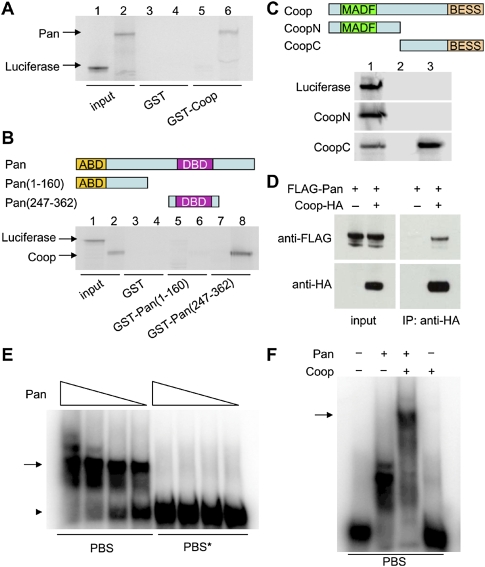Figure 1.
Coop and Pan interact with each other and form a complex on DNA. (A–C) In vitro translated samples were used for GST pull-down. (A) Control Luciferase and full-length Pan (lanes 1,2, 15% input) were pulled down by GST (lanes 3,4) or GST-Coop (lanes 5,6). (B) Control Luciferase and Coop (lanes 1,2, 5% input) were pulled down by GST (lanes 3, 4), GST-Pan (1–160) (lanes 5,6), or GST-Pan (247–362) (lanes 7,8). (C) Control Luciferase, CoopN (1–160), and CoopC (161–358) (lane 1, 5% input) were pulled down by GST (lane 2) or GST-Pan (247–362) (lane 3). (D) Kc cells were transfected with Flag-tagged Pan, or cotransfected with Flag-tagged Pan and HA-tagged Coop. Coop was immunoprecipitated by anti-HA antibody-conjugated beads and was analyzed by Western blotting. (E) Pan (247–362) caused a mobility shift (arrow) of a DNA probe harboring a Pan-binding site (PBS), but did not affect the mobility of a DNA probe harboring a mutated Pan-binding site (PBS*). Free probes are indicated by the arrowhead. (F) Coop alone did not bind to a DNA probe harboring a PBS, but caused a supershift in the presence of Pan (arrow).

